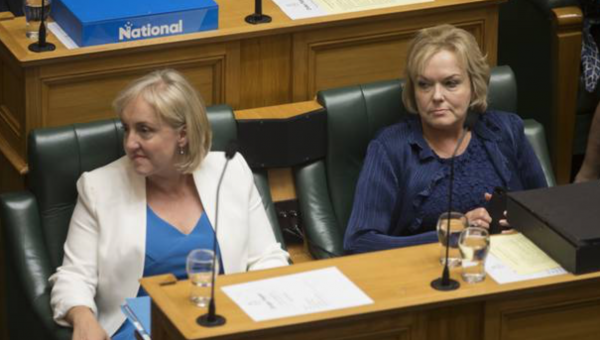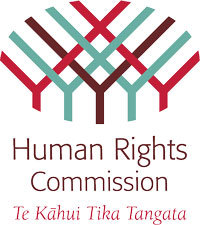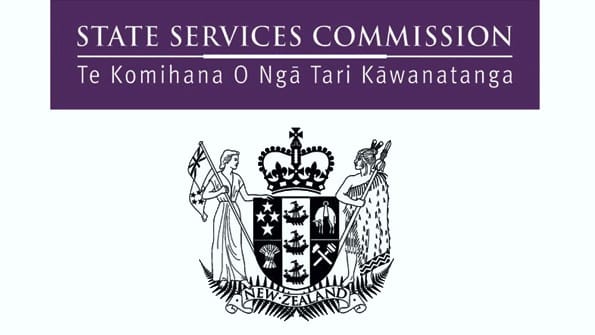
The new government is allowing itself to slip into the practice of the last government which was to blame the migrant or potential migrant for all the problems the system has.
Horror stories continue of widespread abuse and exploitation of migrant labour.
First some facts.
The government accepts around 40,000 permanent residents each year. This number hasn’t changed much in decades.
Usually, New Zealand had a net loss of residents to Australia of around 20,000 a year so on average there has been a net gain of around 20,000 a year in those living in New Zealand as citizens or permanent residents.
Previous governments increased the number of people able to work in New Zealand on a temporary basis. Numbers trebled from around 40,000 to 120,000 under the previous Labour-led government then increased to 170,000 under the last National-led government.
In part, this increase was a product of liberalising the numbers coming on working holiday visas but was also an essential ingredient in the desire to boost numbers of students studying and working here. Some industries began to use the “skilled” migrant category to import labour from overseas in order to avoid costs associated with the skills training that may be needed or avoid increasing wages by the amount needed to attract labour.
The aged care industry has 21% of its staff on a temporary work visa. The Dairy farm industry has specialised in importing skilled labour from the Philippines.
There are around 130,000 student visa holders studying here currently. Most can also work part time. And students were also promised a full-time work visa for a year or more if they completed their courses successfully. Recent migrant exploitation cases have revealed an interconnected network of employers, dodgy schools and immigration agents preying on the weak and vulnerable. And government policy has facilitated this exploitation.
The export education “industry” employs 33,000 people, injects $4.5 billion a year into the economy and subsidises the public tertiary institutions by a billion dollars a year. About one third of these students are doing courses below degree level.
There is another number which is useful to look at but has little scientific value. That is the number that records the flow of people into and out of the country on a permanent or long-term (PLT) basis. In 2017 this number recorded a net gain of 70,000 people. This number is taken from people filling in a form when they arrive which states their intention of staying for a year or more, and then getting people to fill out another form when they leave with their intention to leave for a year or more. A net number is then produced by subtracting one number from the other to produce a net gain or net loss.
This is the only number that gets reported in the media. The PLT flow number of people’s intentions is treated as scientific fact. I am not aware that anyone has actually done a study on whether people’s intentions actually match reality with any scientific rigour. But that is the number that is usually debated in the media.
The main problem with this number is not the lack of scientific rigour since I assume it roughly corresponds to people’s actual movement. The main problem is that people talk about this number as if it is the same number of that for people being allowed to stay as permanent residents.
Around 2012 the net loss to Australia dropped to zero. At the same time, the government was boosting the temporary visa arrivals for both work and study. So the net PLT gain went from almost zero to 70,000 in the five years to 2017. This unplanned growth became a political target in the elections and Labour promised to reduce that number by 20 to 30,000. Most of the media simply conflated this planned reduction with a desire by Labour to stop all migration. Often, including in the left-wing press, Labour was accused of wanting to eliminate the 40,000 people being allowed into the country as permanent residents each year. That, of course, is simply nonsense. No one in the election actually proposed any change to that number and it was the National party that actually trimmed it back from 45000 to 40000 a year after letting it creep up a bit earlier in their term of government.
What Labour was actually saying was that they would reduce the net PLT flow number by 20-30,000. Since around 250,000 visas are issued each year for students and temporary workers the target could actually be achieved by a modest reduction in the overall number of temporary visas being issued.
Their only concrete proposal was to say they would eliminate the right of students doing sub-degree courses from working while studying or afterwards. This would have led to radical fall in numbers applying for visas for such courses and the probable collapse of many schools offering these courses.
What the National Party didn’t tell people, is that they had actually already introduced policies that would achieve a similar reduction to what Labour was promising.
If anyone had bothered to read the National government’s own Treasury reports before the election they could have seen predictions that the net PLT gain number would be dropping from 70,000 to 20,000 under existing government policies over the next five years.
For example, in 2013 National opened the tap on student numbers from India by reducing the English language requirements to study. Student visa numbers went from 8000 to 26000 in the next two years. The requirements were tightened again in 2015 and the numbers have dropped to 9400 in 2017. In addition, the Australian economy appears to be improving which will start pulling labour across the Tasman again.
When Labour was elected it seems to have realised that its policy was going to be achieved without further restrictions being necessary so it seems to have delayed the plan to stop students in sub-degree courses from working. If such a policy is introduced it should only apply to new students.
One of the criticism’s that Labour has directed at the current policy settings is that the right to work in had encouraged students from sub-degree courses to seek permanent residency. He called it a “back-door” to residency – echoing Treasury language in their audit of the system. But this is a lie designed to deflect blame.
Immigration New Zealand (INZ) publicly declared that the study and work visa policy was a “Pathway to Residency”. To blame students for trying to use this pathway is simply unjust.

As it is, only about one in five students are able to transition from study to residency. But because the export education industry depended on this being at least a possibility, it was true that a growing proportion of the “skilled” worker category in the permanent resident approvals was being given to former students. This was not their fault. No one gets residency as of right. All residencies are decided by INZ – without right of appeal against unfair decision making.
Students were brought here under various promises and policy settings and had the rug pulled out from under their feet after they arrived. Many discovered they would never have the right to obtain permanent residence no matter how long they worked here.
INZ also changed the rules on people after they started working or studying here. For many years a manager of a fast-food restaurant could get residency based on their job being skilled. And it is a skilled job. Many students worked part time at the big fast food companies while studying and hoped to use promotions to management as a route to residency. Suddenly, a few years ago we discovered that INZ had unilaterally determined that this job no longer met the requirement for residency. When this happened, I had workers in my office in tears as they explained how they had wasted years of their lives doing jobs they hated only to denied their chance at the last hurdle. At the same time, INZ has maintained the path to residency for managers of retail shops, liquor stores and corner dairies! There is simply no logic.
This group of workers who have already invested years of their life and often tens of thousands of dollars in tuition fees need to have their status changed to allow them to continue working. But they also must be able to escape the servitude and bondage to which they have been forced into by their desperate and vulnerable situation.
I had to represent another of these workers this week. He was an assistant manager at a fast food company. He has worked for the company for eight years and has to renew his visa each year to prove he is needed. He ran the restaurant on his own but they wouldn’t pay him a full manager’s salary. He had complained to his manager that because his salary was too low and because he was working so many hours each week he was actually getting less than the minimum wage. He had also been forced to work at a restaurant for which his visa was not valid. But he put up with it all because he had no choice. His visa was tied to the company. He wife and new-born child also live here with his wife working for the same company.
In the six years to 2017, there were 11,000 cases of migrant exploitation reported to the Ministry of Business, Innovation and Employment (MBIE). Of these only 5700 were investigated and 15o prosecuted. The chances of getting caught and prosecuted for migrant exploitation are infinitesimally small. Exploitative and abusive employers just laugh all the way to the bank.
Every audit done by the of the working condition of migrant workers by MBIE has found widespread, often near universal, non-compliance with the law. This was true of the construction companies doing the Christchurch earthquake rebuild. As a consequence, MBIE decided the only way to combat the exploitation was to give workers the right to change employers. That principle needs to be extended to all migrant employees on temporary visas.
We also need to establish a database of “approved” employers. Anyone who wants to employ someone on a temporary visa should have to register with MBIE, show an approved written employment agreement, and go through an approved course in employee rights. These rights should include the obligation to pay all minimum legal entitlements, and that all wages must be put into a bank account with a detailed payment record provided.
We now have a situation where there are several tens of thousands of people who have spent five or ten years of their lives working in New Zealand, often renewing their temporary visas year by year, often in jobs in which their visa is tied to their employer, desperate to stay and willing to do anything to do so. Many spent their entire adulthood living and working in New Zealand and it would be impossible to return to their home countries without inflicting enormous harm Many have started families and have young children for whom New Zealand is their only home.
These workers are actually needed in New Zealand today. They are doing jobs vital to New Zealand society. They could all be given permanent residence tomorrow and the PLT number of 70,000 or whatever it is next year would not increase by a single digit.
The outgoing National government changed the immigration rules just before they left office that would have eliminated any chance of anyone earning less than $23 an hour from being categorised as skilled and would not have been able to work in New Zealand any longer than three years before they had to leave. Nearly every one of the thousands of workers in aged care will have to leave unless there is a sudden radical increase in their wages. INZ has now tweaked that wage number and said a wage of $20.60 is the bar. That is just above the living wage of $20.20.
I want everyone in New Zealand to be paid a living wage. But until the government legislates for that to happen no company can voluntarily pay more than their competitor. That is the nature of capitalism.
Forcing everyone earning less than an arbitrary number to leave the country is just asking for more abusive exploitation to be normalised as these workers look for employment where they have to subsidise their own wage through back-door means.
It makes no sense to send workers on temporary visas home – many of whom, I repeat, have been here many years and made homes and lives for themselves and their families – and then bring in another group of vulnerable workers on temporary visas to be put into a bonded employment relationship open to exploitation all over again to replace them.
That is simply idiotic.
We need these workers doing these jobs today. It doesn’t matter if they are a cleaner or an aged care assistant. These are all important “skilled” jobs worthy of recognition.
When the National government brought in this policy to remove anyone not above the salary bar automatically when their current visas expired, their dairy farmer mates screamed bloody murder because they were going to lose “their hands”. So an exemption was made that anyone who had been working on a dairy farm for five years could transition to permanent residence.
The same principle actually applies on simple humanitarian grounds to everyone who has now made New Zealand their home.
We could start a register of all workers in regular employment who want to stay permanently. They should be given an emergency work visa with the right to change employers guaranteed.
After a certain period – say five years – if they still want to stay, they should be given permanent residency rights. This group of residents would be on top of whatever regular permanent resident number we have each year which covers family reunification, refugees, and the skilled worker categories.
That would eliminate the worst exploitation almost overnight.
Free all workers from bonded servitude!

















